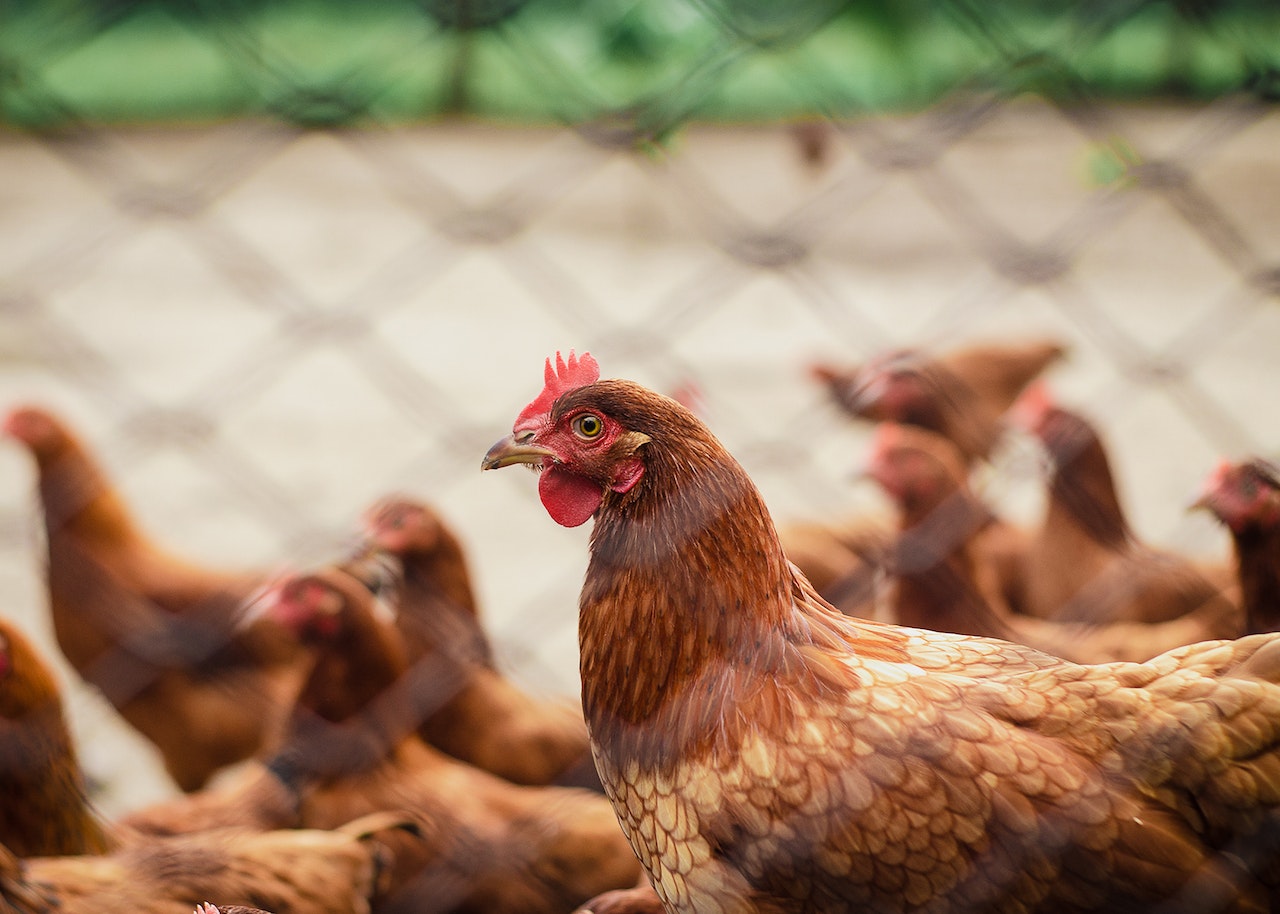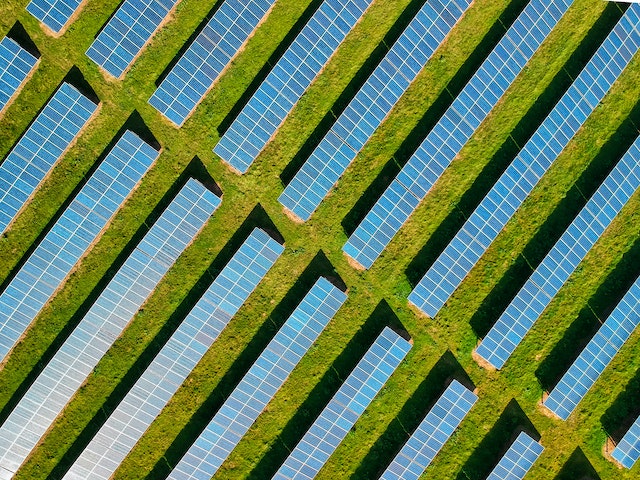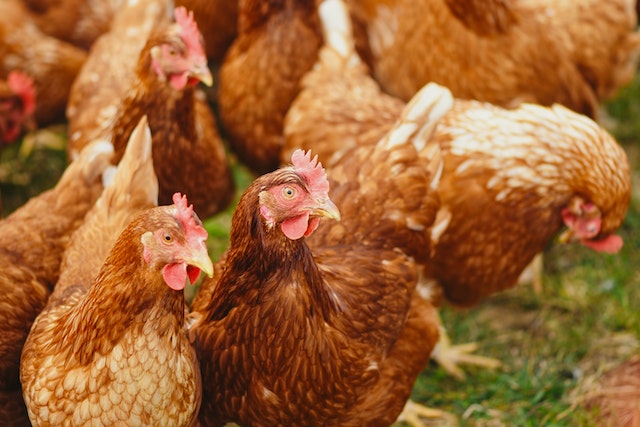
Photo by Italo Melo from Pexels: https://www.pexels.com/photo/brood-of-hen-2446695/
Poultry farming is an agricultural practice that involves the rearing of domesticated birds, such as chickens, turkeys, ducks, and geese, primarily for meat or eggs. With a growing global population and increasing demand for protein, this practice has become a vital part of the world’s food production. But parallel to this growth is the pressing issue of environmental conservation. The question then arises: does poultry farming contribute to or hamper the fight against environmental degradation?
Today’s poultry farming has begun to shift from traditional, potentially damaging practices to more sustainable ones. This progress is driven by developing and implementing techniques that reduce environmental impact, manage resources efficiently, enhance bird welfare, and, more importantly, contribute significantly to environmental conservation.
Let’s delve into the ways modern poultry farming practices are effectively contributing to environmental conservation. Whether you’re a backyard chicken keeper setting up your first few poultry nesting boxes or a seasoned farmer, keeping up to date with modern practices is crucial to ensure the health and productivity of your poultry.
Understanding Modern Poultry Farming
According to the Food and Agriculture Organization (FAO), the global production of poultry meat has dramatically increased from 9 to 133 million tonnes from 1961 to 2020 to cater to the rising demand. Similarly, egg production has risen from 15 to 93 million tonnes. In 2020, nearly 40% of worldwide meat production was poultry meat. Over the past 30 years, global egg production has seen a 150% increase.
Modern poultry farming has come a long way from its original design. Technological and scientific advancements have ushered in an era of efficiency, reduced waste, and better animal welfare practices. This paradigm shift is primarily driven by a desire to cater to the increasing global demand for poultry products while ensuring environmental sustainability. This shift involves the integration of robotics, data analysis, and advanced feeding techniques to optimize operations.
The use of innovative techniques and technologies like precision feeding and climate-controlled poultry houses help streamline operations. Precision feeding, for instance, customizes the diet of each bird based on its specific needs, reducing waste produced and maximizing growth efficiency. On the other hand, climate-controlled environments enhance the well-being of the birds and reduce energy usage by optimizing temperature, humidity, and ventilation.
Yet, the most striking aspect of modern poultry farming is its commitment to environmental conservation. The sector is increasingly aware of its potential environmental impact, driving changes from within to ensure a sustainable future. Whether it’s implementing waste management strategies or finding ways to reduce water and energy usage, modern poultry farming recognizes its responsibility to both the economy and ecology.
Apart from industry-led changes, external factors such as consumer demand for ethically sourced products and government regulations promoting sustainable farming practices also push the sector toward being more eco-friendly.
Eco-Friendly Techniques in Modern Poultry Farming

Photo by Red Zeppelin from Pexels: https://www.pexels.com/photo/solar-panels-on-a-green-field-4148472/
Modern poultry farming has adopted several eco-friendly techniques that significantly contribute to environmental conservation. Understanding these techniques is crucial, as it highlights the industry’s commitment to merging profitability with sustainability.
Waste Management
A major advancement in modern poultry farming practices is efficient waste management. Poultry farms generate a lot of waste—feathers, bedding, dead birds, and manure—which, if improperly handled, can harm the environment.
To deal with this, modern farming practices involve converting waste into valuable resources. Poultry waste is now being processed into biofuel and organic fertilizer, reducing landfill waste and contributing to a circular economy system. In addition, composting and anaerobic digestion techniques have been adopted to manage manure in an environmentally friendly manner.
Energy Consumption
Modern poultry farms have taken substantial strides in energy conservation. High-tech, energy-efficient equipment such as LED lights and automated heating and cooling systems have been integrated into poultry houses.
Poultry farms are also using renewable energy. The most common renewable energy sources used in poultry farming are solar and wind power. Solar panels can be installed on the roofs of poultry houses to generate electricity, while wind turbines can be placed on farms to generate electricity. Other renewable energy sources that are being used in poultry farming include geothermal energy and biomass energy.
Water Usage
Water is a critical resource in poultry farming, used in cooling systems, cleaning processes, and for the birds directly. Innovative water management practices ensure the efficient use of this precious resource. Techniques like rainwater harvesting and water recycling systems have been introduced. More importantly, precision watering systems have been developed to reduce water waste.
Animal Welfare
Ethical treatment of birds is not only demanded by consumers but also contributes to environmental conservation. Healthier birds mean fewer diseases, which in turn leads to a lesser need for antibiotics. This reduces the risk of antibiotic resistance, a significant public health risk targeted by the World Health Organization.
These eco-friendly techniques reflect the environmental efforts embedded in modern poultry farming practices. Each initiative, when combined, plays a significant role in mitigating the environmental impact of the industry.
The Role of Modern Poultry Farming Practices in Environmental Conservation
Going beyond profitability and productivity, modern poultry farming takes a front-facing role in environmental conservation. Here’s how major environmental components benefit from these innovative practices:
- Reduction of carbon footprint. The International Panel on Climate Change (IPCC) mentions agriculture as one of the significant contributors to greenhouse gas emissions, including carbon dioxide. Modern farming practices, particularly waste management and energy efficiency initiatives, contribute significantly to reducing these emissions. By transforming waste into biofuel, farms can use biogas for heating and electricity, reducing dependency on fossil fuels.
- Mitigation of soil degradation. Overuse of chemical fertilizers can deplete soil nutrients and disrupt natural biota, leading to soil degradation. But with the integration of composting initiatives, poultry waste—a rich source of nitrogen—is recycled back into the soil as a natural fertilizer. This not only reduces synthetic fertilizers’ necessity but also improves soil fertility.
- Preservation of natural resources. Conscious water and energy consumption practices allow modern poultry farms to reduce their usage of these vital resources. This is achieved by technologies such as precision watering systems, reuse and recycling of water, climate-controlled environments that reduce energy needs, and the use of renewable energy.
- Promotion of sustainable agriculture. Sustainability is the cornerstone of today’s agricultural landscape. Through a combination of waste management, biodiversity conservation strategies, sustainable water practices, and energy use efficiency, modern poultry farms are reinventing the definition of sustainable agriculture. The development of organic and free-range poultry farming also promotes ethical animal husbandry, increasing the overall sustainability quotient of the sector.
Challenges and Opportunities in Implementing Environmental Conservation in Poultry Farming

Photo by Alexas Fotos from Pexels: https://www.pexels.com/photo/flock-of-hens-on-green-field-2255459/
Like any evolving industry, there are both hurdles and possibilities when it comes to implementing environmental conservation practices in poultry farming. Recognizing these challenges and exploiting the opportunities is key to the future sustainability of the sector.
Existing Challenges
Among the primary challenges is the cost of implementing modern, eco-friendly technologies. The initial investment in renewable energy systems, precision equipment, and waste management systems can be prohibitive for small-scale and marginal farmers. Moreover, there is a need for knowledge transfer and training in the use and maintenance of these systems.
Potential Opportunities
Despite the challenges, there are several opportunities. The growing consumer demand for sustainably and ethically produced food products is a key driver for the sector to embrace green practices. Additionally, the use of poultry waste as a resource, such as compost, biofuel, or a component in biogas production, could potentially open up new avenues for revenue generation.
Government Policies Supports
Around the world, government bodies are promoting sustainable farming practices. This is reflected in policies that provide subsidies for renewable energy systems, grants for waste management initiatives, and incentives for sustainable practices. In the US, the USDA’s Natural Resources Conservation Service offers various programs supporting farmers to implement conservation practices. Similarly, in Europe, the Common Agricultural Policy (CAP) provides funds for farmers who are adopting or maintaining sustainable practices.
Understanding these challenges and opportunities is crucial for developing strategies that facilitate the wider adoption of sustainable practices within the poultry farming industry, as well as realizing its robust potential as a force for environmental conservation.
Final Thoughts
Modern poultry farming’s journey toward environmental conservation is an impressive and necessary direction for sustainable agriculture. By integrating innovation with responsibility, the industry is redefining its operations into a model that balances productivity with ecological care.
The evolution from traditional practices to eco-friendly techniques has demonstrated significant advancements in waste management, energy consumption, water use, biodiversity preservation, and animal welfare. These concerted initiatives have resulted in reducing the carbon footprint, mitigating soil degradation, preserving natural resources, and promoting sustainable practices.
While challenges exist, notably the need for capital investment and knowledge transfer, opportunities are abundant. Consumer awareness and demand for sustainable products, potential revenue from waste transformation, and governmental support create a promising future for environmental conservation within the poultry farming industry.
As we progress, it’s integral for farmers, consumers, policymakers, and everyone involved in the food production line to encourage and support these sustainable practices. More importantly, we should strive to build upon the advancements already made—fine-tuning, innovating, and diligently pressing forward in our collective quest for a future where the nourishment of humanity works hand in hand with the safeguarding of our environment.



